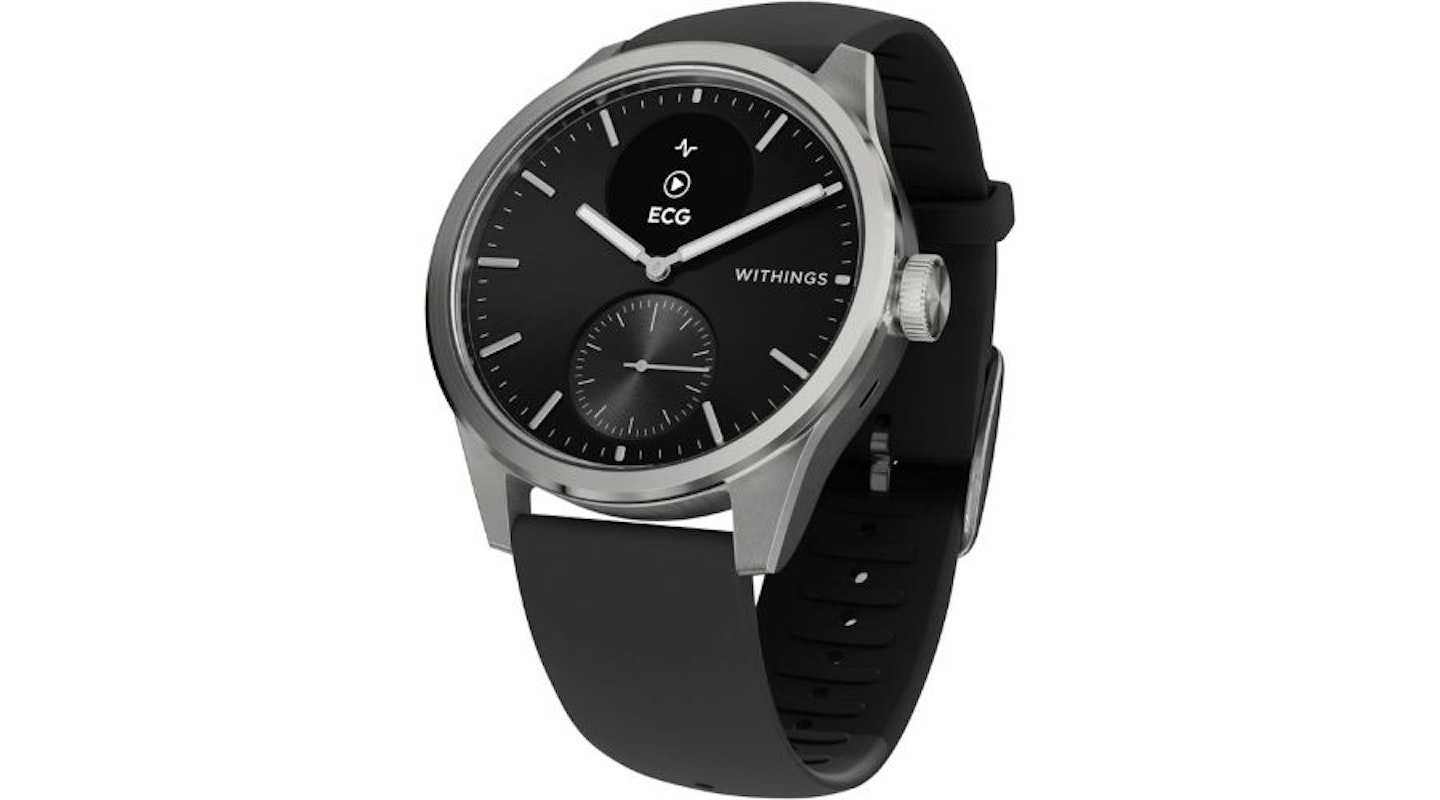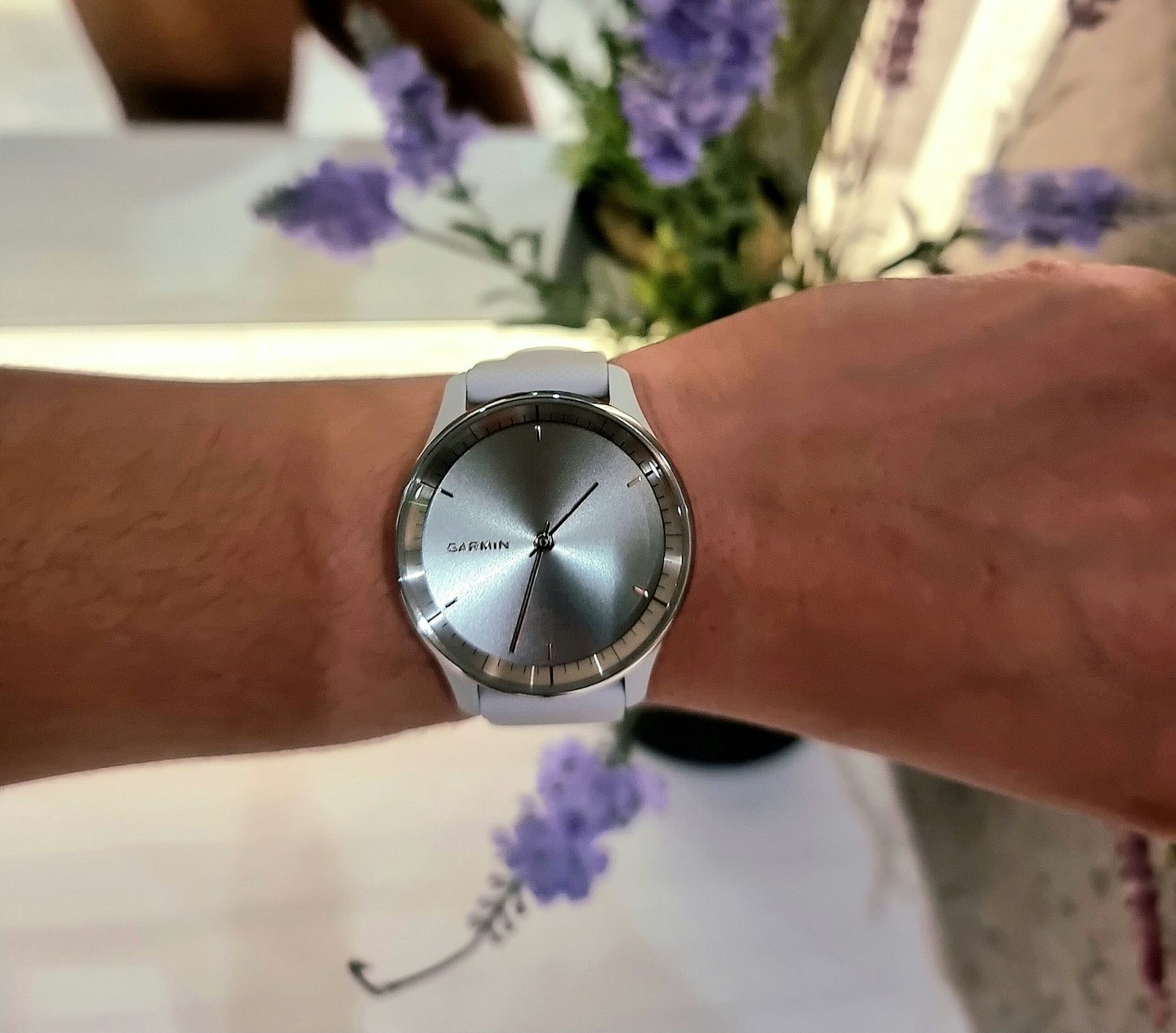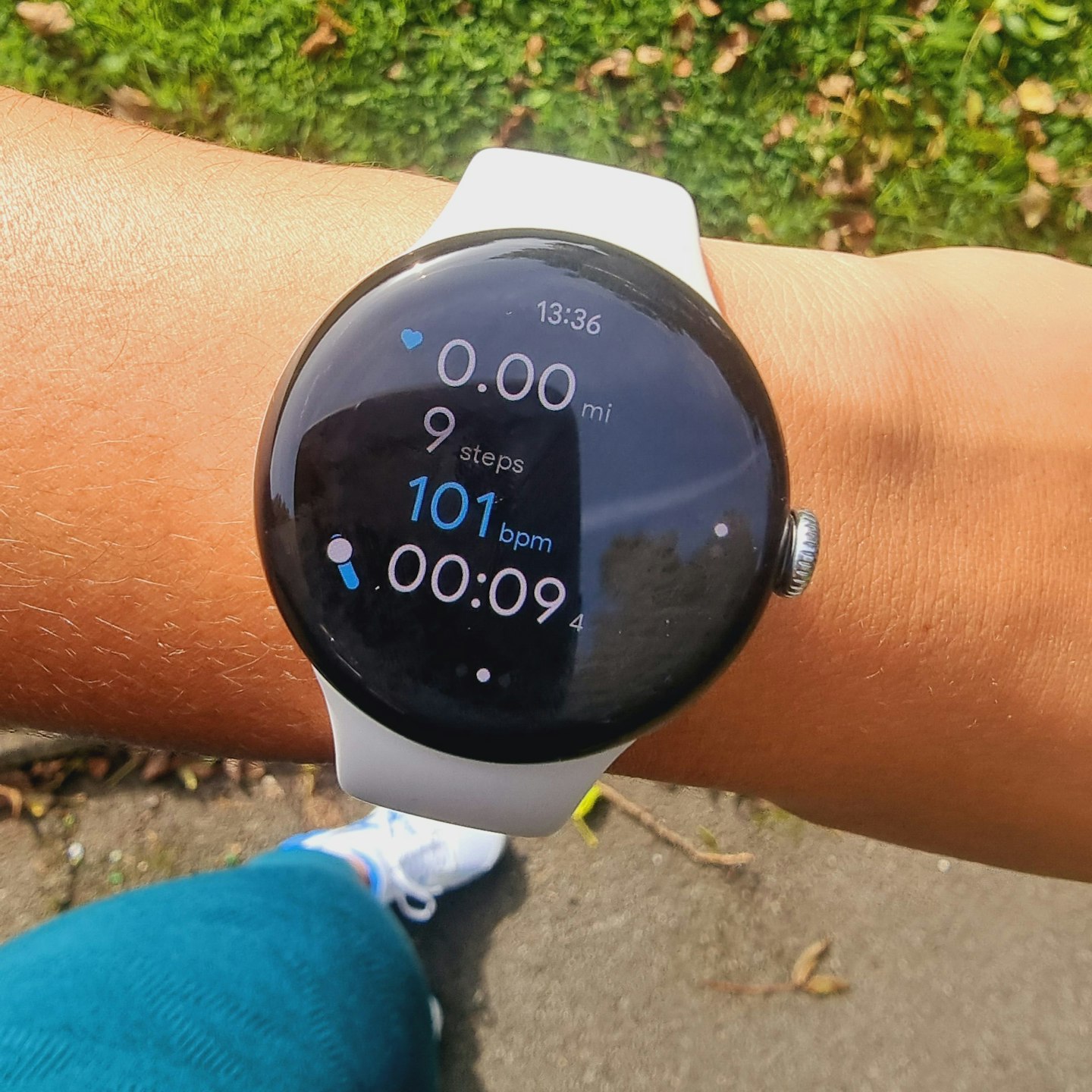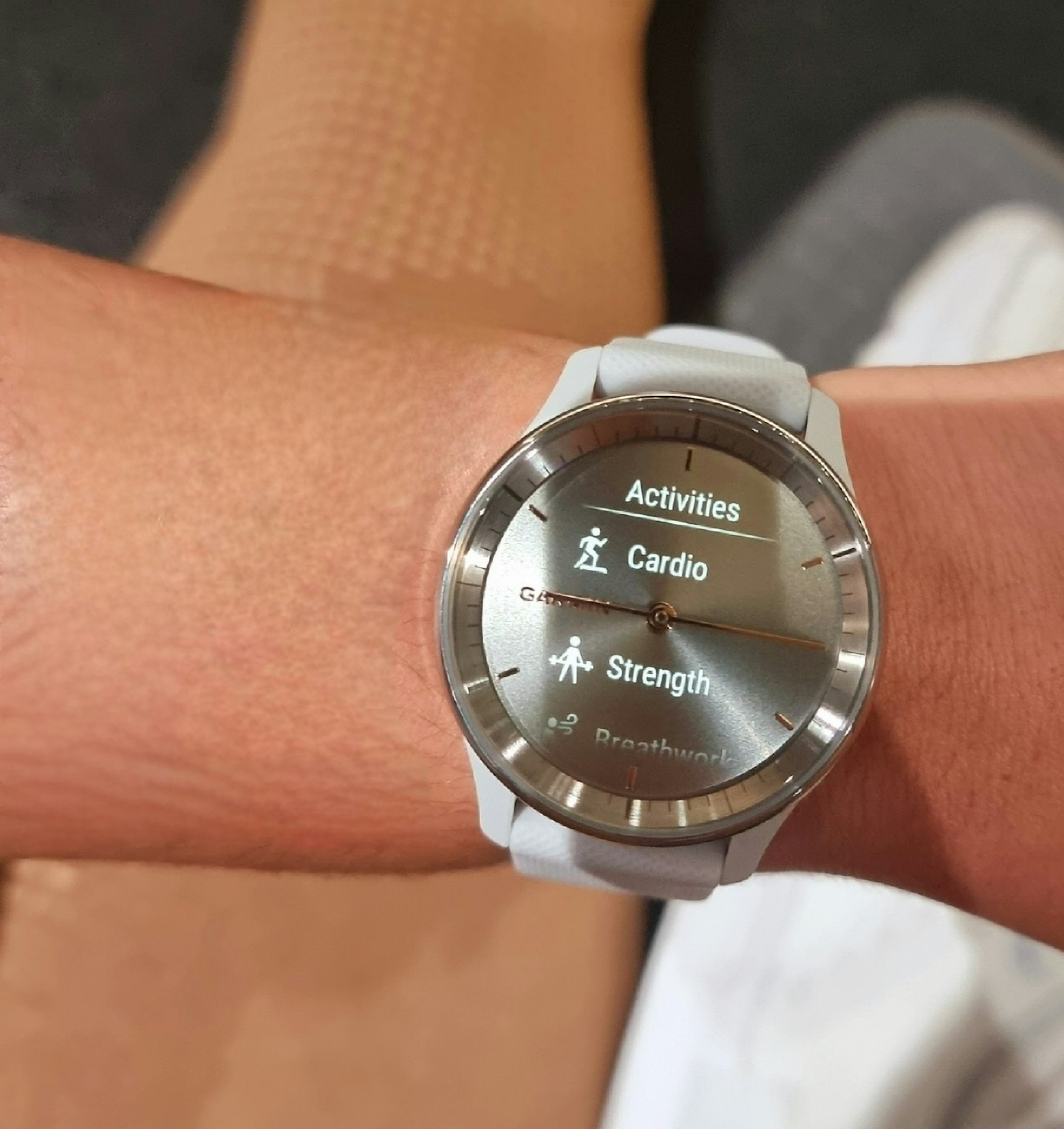Hybrid smartwatches – which offer the looks of a traditional timepiece but the tech of some of the best smartwatches - remain a relatively small segment of the overall smartwatch market. Withings is perhaps the best-known developer of hybrid watches, while Garmin and its fitness trackers has also dipped its toes into the water.
Founded in Turin in the 1930s, the name Pininfarina will likely be more familiar to car enthusiasts than smartwatch fans, given its heritage of designing cars for the likes of Ferrari and Alfa Romeo. Now, the brand has started to turn its attention to the growing fitness tech market with the Senso Sport hybrid smartwatch.
The Senso Sport hybrid smartwatch follows on from the original Senso hybrid smartwatch, this time with a focus on health. Pininfarina is a brand known for its iconic design heritage, and the brand has lent its name to the Hong Kong-based Globics Technology, which developed the smarts that underpin the aesthetics.
As a fan of hybrid smartwatches, we slapped the Senso Sport on the wrist of Steven Shaw, Senior Writer and fitness tech expert. Read on to see how the Senso Sport fared in his hands-on review.
Pros
- Stunning design
- Respectable battery life
- Plenty of activity types can be tracked
Cons
- Companion app is quite basic
- Fiddly setup process
- Question marks over accuracy of some metrics
| Display | Monochrome OLED |
| Battery Life | Up to 14 days |
| GPS | Connected-GPS only |
| Water Resistance | 5ATM |
| Compatibility | iOS and Android |
| Dimensions | 44 mm |
| Weight | 95 grams |
Classic design
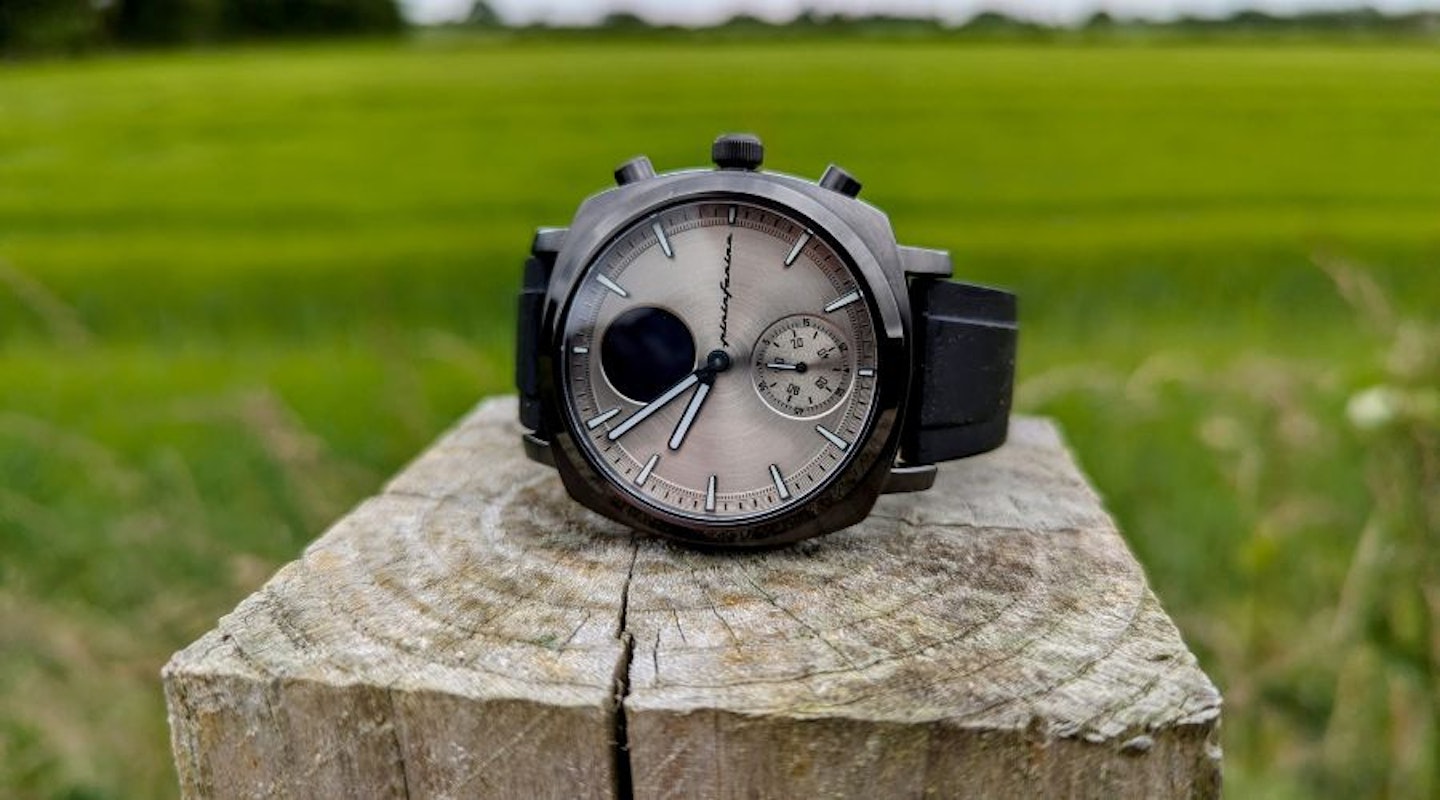
I’m a big fan of hybrid smartwatches. I love wearing a watch that looks like a traditional analogue timepiece but still tracks my health and fitness. And in design terms, the Senso Sport does not disappoint. It’s one of the best-looking hybrid smartwatches bar none. Even the box it comes in feels classy.
The case is gorgeous, the watch face looks great, and this will easily pass as a beautiful, traditional watch if someone glances at it. You can wear this to work or to a formal event, and it won’t look out of place. Pininfarina is well known for its design heritage, but it’s worth noting that this is a watch made by Globics Technology, which has a licensing agreement with Pininfarina.
The watch is made from stainless steel, which gives it a solid feel. The sapphire crystal lens is designed to be extremely scratch resistant – ideal if you’re going to be wearing this watch while you’re working out. It’s significantly heavier than a lot of smartwatches – the watch weighs 95g without the strap and over 120g with a strap, which is roughly twice the weight of the Garmin Forerunner 255, for example. For some, this heft will give it a feeling of solidity. For others, all that extra weight may feel undesirable. Runners, for example, may prefer something a little lighter.
The strap I tested was made from FKM rubber, but leather straps are also available if you prefer. I found it to be reasonably comfortable, although not quite as soft as some silicone straps I’ve tried previously. I also found that this strap was big – I had to use the first adjustment hole, and even that was slightly loose. If you have slim wrists, you may need an alternative strap.
The watch has luminous hands to help you tell the time in the dark, while the small OLED screen is relatively discreet. One of the big benefits of a small display like this is battery life. I was able to go around 10 days between charges. Like other hybrid smartwatches, you navigate the display by turning the crown, and pressing it to select an option. There’s a secondary dial that can be used to track your progress towards your step goal or to track the seconds as they pass.
It’s a beautiful, elegant design, and anyone who wants a watch to look like a watch could do a lot worse than this.
All the essential features

It’s worth saying that hybrid smartwatches generally lack some of the features of a fully-fledged smartwatch. For example, you won’t get a touchscreen, they don’t tend to offer built-in GPS, microphones and speakers, and they don’t normally have apps that can be run via the watch. The Senso Sport is no different in this regard. It offers the sort of health and fitness tracking features we may expect to find in one of the best Fitbits, for example.
In health terms, the Senso Sport can track heart rate and heart rate variability, blood oxygen, stress, sleep and estimate calories burn. The watch can also take an ECG (electrocardiogram) reading, to check for irregular heart rhythm.
It can also count steps, and track a variety of activity types, including running, walking, cycling, and yoga. I was slightly surprised to see that it also has a mode for cricket, football and boxing, as I wouldn’t generally recommend wearing a watch like this while playing any of those sports.
The Senso Sport also has a few other smart features. A stopwatch and timer, an alarm, notifications for texts and calls, weather reports, music and camera controls are all available. The watch also offers connected-GPS, which allows you to track outdoor walking, running and cycling by tracking you via your phone.
Hybrid smartwatches aren’t designed to be all-singing and dancing. Instead, they tend to have a narrower focus on health and fitness metrics, without lots of apps and other smart features. If you want a full smartwatch experience, or a watch that has great GPS, this will leave you disappointed. But for anyone who just wants to keep track of the basics, this has everything you need.
Any downsides?
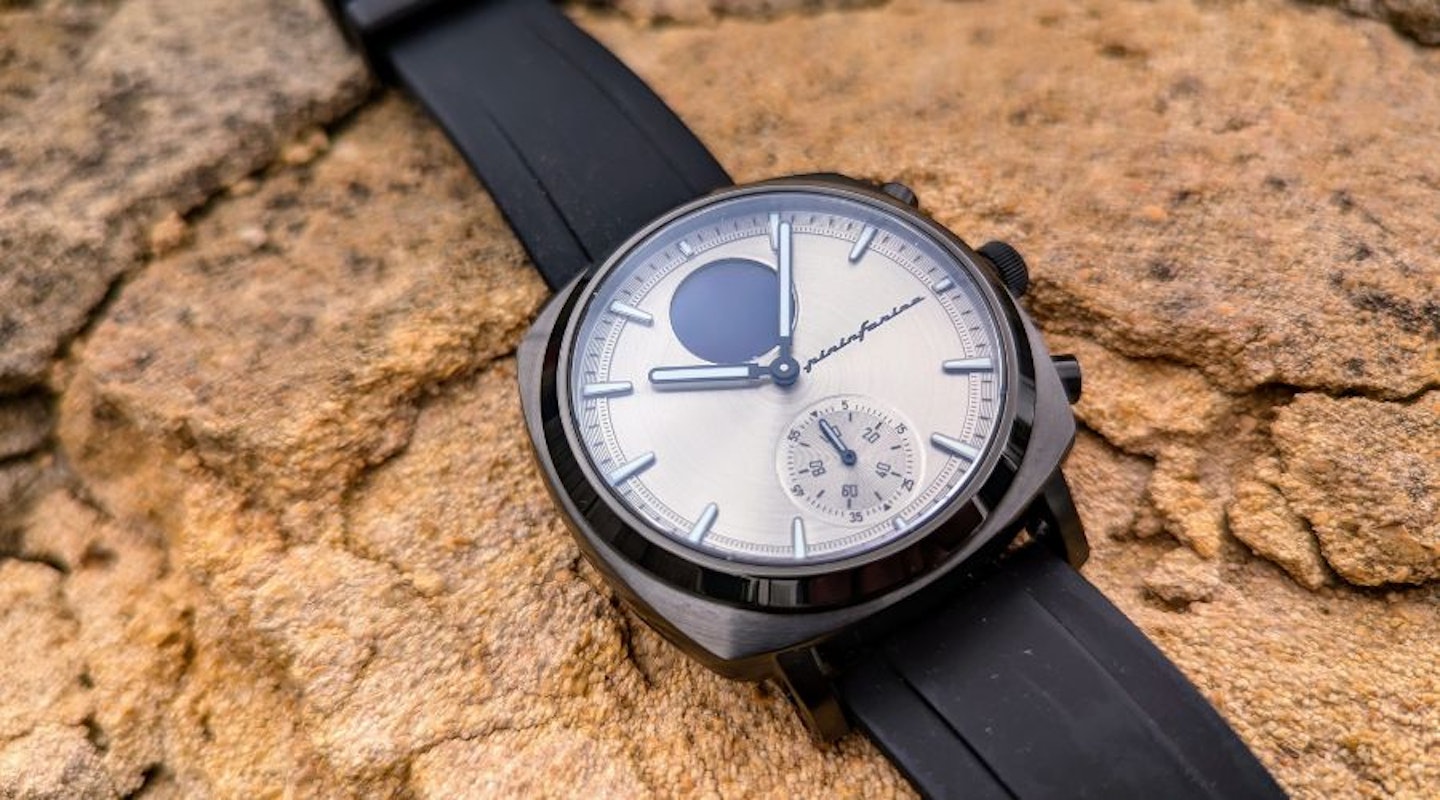
Poor performance
While I absolutely love the look of the Senso Sport, I found myself distinctly underwhelmed by its overall performance. Getting the watch set up was harder than it should have been, and it took more than one attempt to pair it successfully with my Android phone.
When it came to tracking my health and fitness data, I would describe it as uneven. Heart rate tracking seemed OK, especially during cardio exercise. Typically, the Senso Sport was less than three beats per minute different to the Garmin Forerunner 255, both for maximum heart rate and average heart rate. The watch was a little less consistent with other types of exercise, however.
Walking and calorie burn
It was much less accurate when it came to walking. Relying on connected-GPS rather than built-in GPS meant the watch tended to overestimate how far I’d walked. Slightly confusingly, when calculating my overall step count, the Senso Sport came in with a significantly lower step count than the Garmin watch – even when it thought I’d walked further. On average, the Senso Sport detected almost 3000 steps fewer per day, than the Garmin, with some days over 6000 steps apart. Calorie burn estimates were similarly inconsistent.
On a one hour walk, the Garmin device estimated a calorie burn of around 300kcal, while the Senso Sport estimated closer to 600kcal, which felt unrealistic. Having tested many, many fitness trackers and smartwatches, none has ever given me an estimate that high after a one hour walk. The difference was less pronounced with other types of exercise, such as high intensity cardio, where the Senso Sport was still typically about 25 per cent above the Garmin watch.
While it’s difficult to know how accurate an individual calorie burn estimate is, there’s an obvious problem with constantly being told you’ve expended far more energy than you probably did – especially if you’re trying to create a calorie deficit.
Sleep
Sleep tracking is notoriously difficult to assess, but once again, I found myself doubting the validity of the readings I was getting from the Senso Sport. It gave me very different readings to the Garmin Forerunner 255, and generally, told me I had slept better than the Garmin watch did. I felt the Garmin was a more accurate reflection of how I had slept, and it seemed more effective at spotting when I was awake but lying still.
I also found the information provided by the companion app confusing. Sometimes it would say my sleep was “very good” or “excellent” even if my sleep depth was classed as “poor”. On one striking occasion, it said my sleep had been better than 90 per cent of users, even though the watch had only recorded two hours of sleep.
App
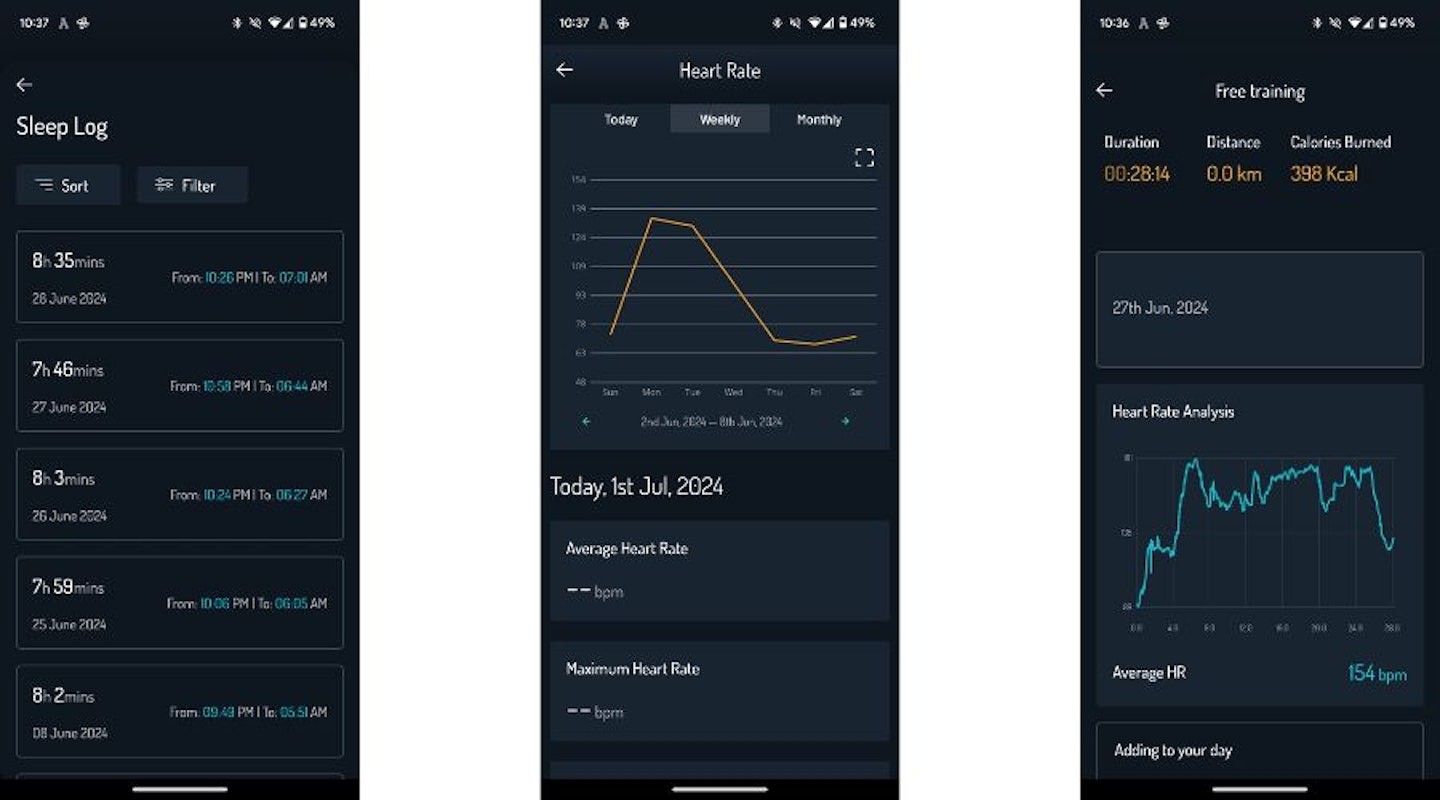
If you want to see any of your metrics in depth, then you’ll need to use the Pininfarina Hybrid Watch companion app. This is where you get graphs about your sleep, heart, wellness, and activity. It has a simple layout, with a home screen that offers a snapshot of key metrics such as sleep, calories and activity, then some tabs along the bottom to look at specific measurements in more depth.
I wasn’t overly impressed by the app. While daily metrics are easy enough to look at, the app wouldn’t let me go back and view historic data in much depth. If I didn’t look at a night’s sleep in depth the day after, I seemed to lose my chance, and was restricted to just seeing the overall duration of my night’s sleep. Activity tracking was a little better, because I was able to go back and look at historic data. But it was a frustrating experience.
I also felt that there wasn’t a great deal of advice or explanation of what I was looking at. While some people may be fine with this light touch, the lack of insights makes it harder to make changes to improve your health. For example, telling me my sleep depth was “poor”, but my overall sleep was “very good” is confusing. And without clearly saying why, or what I might do to improve it, feels like a missed opportunity.
Compared to the design of the watch itself, the app is a real disappointment, and doesn’t come close to matching the best apps on the market, from the likes of Garmin, Fitbit and Withings, to give a few examples.
Price and competition
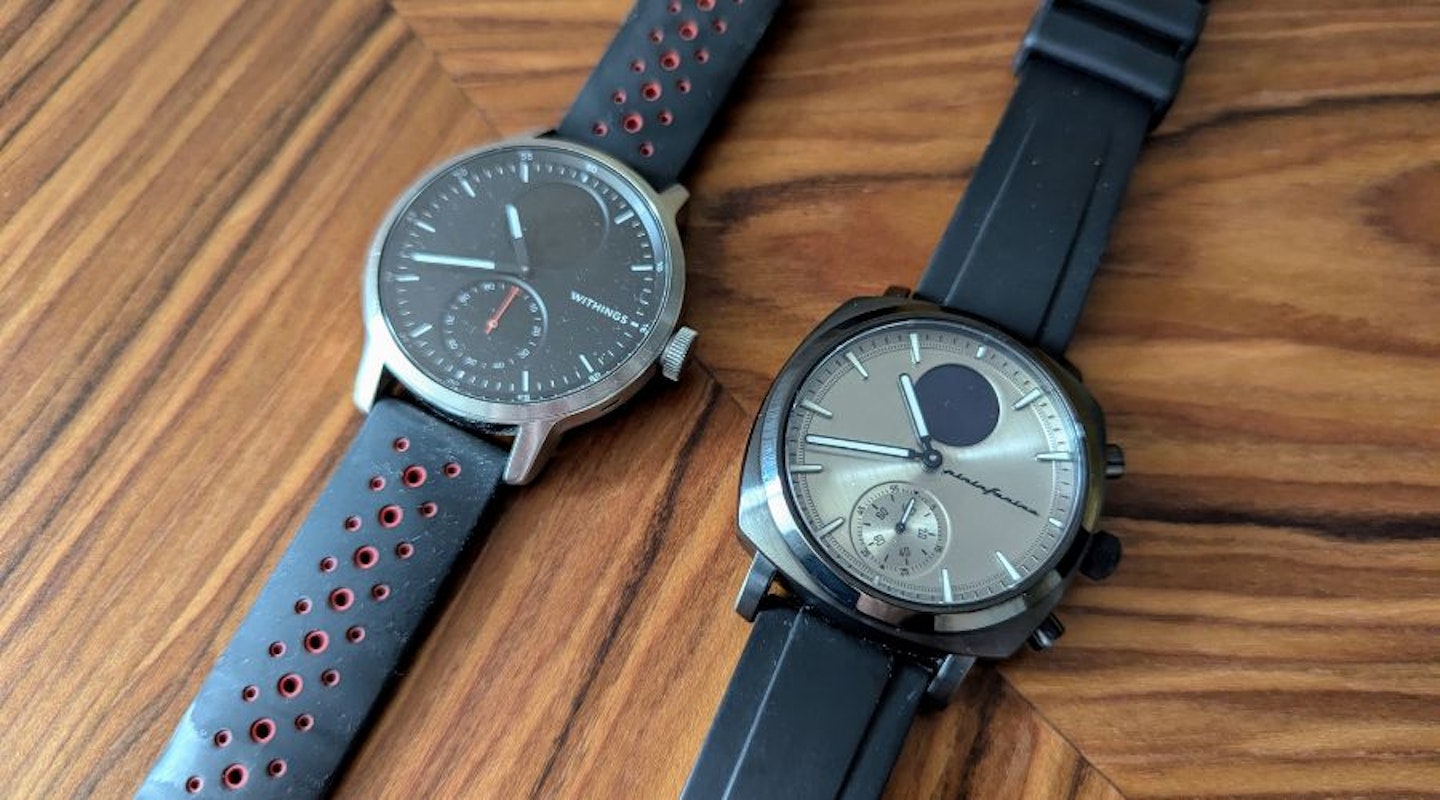
With an RRP of £379, the Senso Sport is more expensive than the Withings ScanWatch 2 (RRP £319.95) and almost £100 more than the Garmin Vivomove Trend – two examples of hybrid smartwatches from other manufacturers. Both of those watches have more user-friendly and in-depth apps. It’s only £20 cheaper than the Apple Watch Series 9 (RRP from £399) which offers a complete smartwatch experience, and is great for iPhone users. The Google Pixel Watch 2 (RRP £349) is another smartwatch that works with Android devices, and benefits from all of Fitbit’s experience and know-how when it comes to tracking your health and fitness.
The price places it firmly in the “premium” bracket, which, if based purely on how it looks, would not be unreasonable. But when factoring in features, performance, and the companion app, it starts to feel expensive. The questionable accuracy of the tracking, lack of insight, and the unpolished feel of the app mean this falls below what I’d expect from a watch with this price tag.
Ultimately, a lot depends on what you’re looking for from the watch. If it’s purely about design, you may feel that the stunning good looks justify the price tag. On the other hand, if – like me – you're really interested in the data it produces, other options are worth considering.
Who is it for?
The Senso Sport hybrid smartwatch is a watch for users who, primarily, want a beautiful timepiece, that happens to also offer some insights into their health and fitness. If you want a few basic smartwatch features, such as on-wrist notifications when you receive a text or phone call, this will do the job, in considerable style.
However, if you’re a dedicated fitness enthusiast, you may find this a little limited in terms of the metrics it offers. The questionable accuracy of some of its readings means there are better options out there.
But, if you’re happy with ballpark figures to get an idea of how far you’ve walked or how well you slept, this watch can still do the job. While the specific data may not be perfect, you can still see if you slept better or worse than the night before, for example. And heart rate tracking was, I felt, the most accurate metric of the lot.
Would we recommend it?
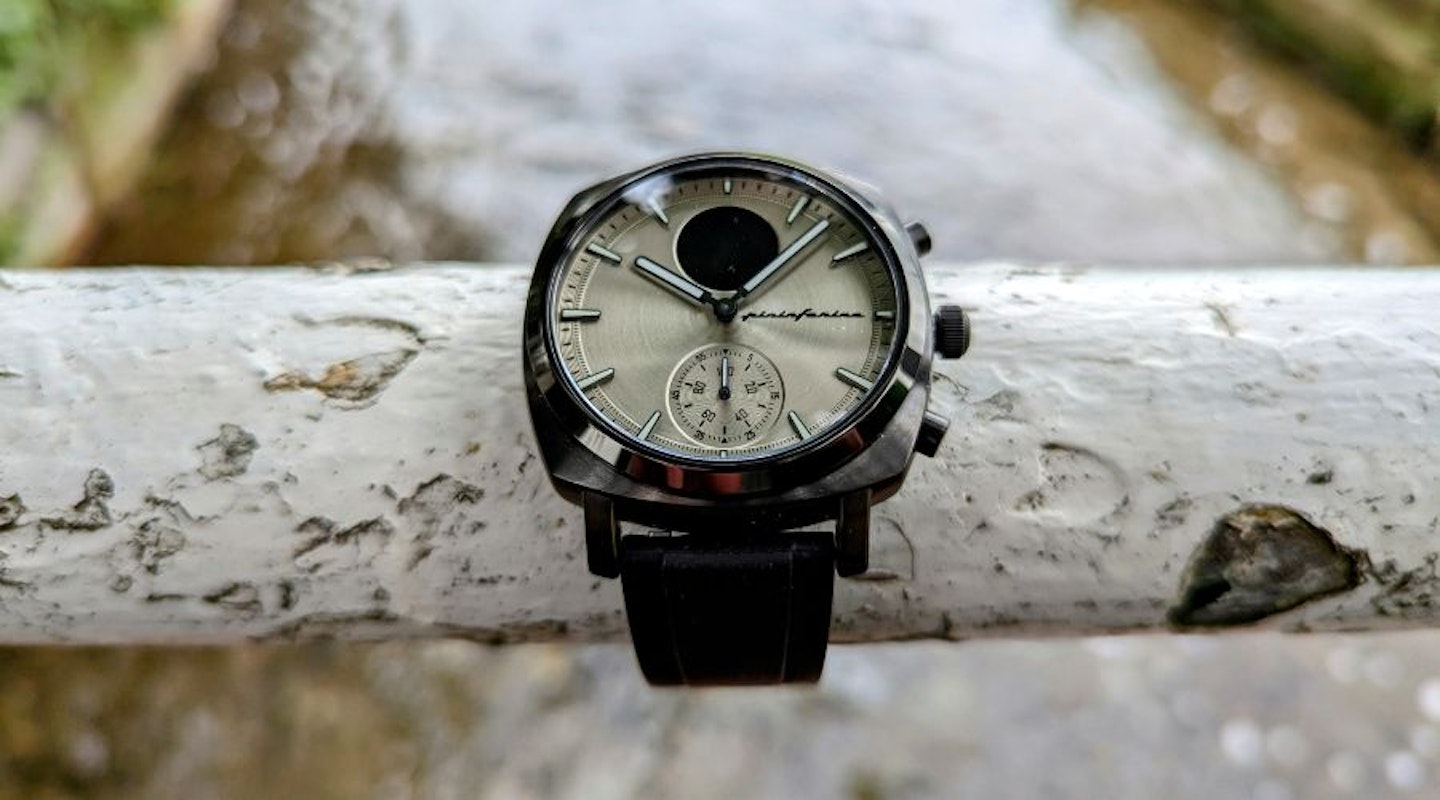
Aesthetically, there’s a lot to like about the Senso Sport hybrid smartwatch. It genuinely is one of the best-looking smartwatches I’ve worn. This is a watch I’d be happy to wear without using it for activity tracking.
But using it for activity tracking is arguably the main reason for buying it. And on that basis, this is a watch I struggle to recommend. The tracking doesn’t feel especially accurate, and the app doesn’t provide the level of insight and support that the best devices offer.
When I compare the Senso Sport to the Garmin Forerunner 255, there really is no contest when it comes to the range and depth of insight on offer. When I compare it to the Withings ScanWatch, it feels less accurate, and the app is much less user-friendly. And when you consider that this watch is more expensive than either of those devices, it becomes increasingly difficult to make a strong case for it.
I really wanted to love this watch. To repeat what I said earlier, it really is a beautiful timepiece. But issues with accuracy and the app mean it struggles to compete with the best devices out there.
Pros
- Stunning design
- Respectable battery life
- Plenty of activity types can be tracked
Cons
- Companion app is quite basic
- Fiddly setup process
- Question marks over accuracy of some metrics
| Display | Monochrome OLED |
| Battery life | Up to 14 days |
| GPS | Connect-GPS only |
| Water Resistance | 5ATM |
| Compatibility | Android and iOS |
| Dimensions | 44 mm |
| Weight | 95 grams |
More items to consider
If you like the idea of a hybrid smartwatch, the Withings ScanWatch 2 is arguably the current best choice out there. Having launched at the end of 2023, it offers plenty of health and fitness tracking features, including – uniquely – 24/7 temperature tracking. This can be used to indicate things like recovery after exercise or may even reveal early signs of illness.
There’s the usual health metrics – step counting, heart rate, blood oxygen, sleep, elevation, and calorie burn estimates, as well as menstrual cycle tracking, workout HR zones, and a few other tricks.
The app is user friendly and offers plenty of other insights into trends in your health and fitness, explanations of what the measurements mean, and suggestions for how you might improve any of those metrics. It’s also a nice-looking watch.
Pros
- All-day temperature sensing
- User-friendly app offers plenty of insights
- Workout HR zones to help optimise your exercise
Cons
- No built-in GPS
- Very limited smartwatch features
| Display | |
| Battery Life | |
| GPS | |
| Water Resistance | |
| Compatibility | |
| Dimensions | |
| Weight |
The Garmin Vivomove range is Garmin’s contribution to the hybrid smartwatch space. With an RRP of £279.99 it’s significantly cheaper the Senso Sport, but offers plenty of Garmin’s health and fitness tracking tools, and a much more polished app experience via Garmin Connect.
While perhaps not quite as attractive as the Senso Sport, it’s nonetheless a good-looking watch. It’s also significantly smaller, so for anyone with slim wrists, this watch may be a more comfortable fit.
Battery life is a solid five days – nowhere near as good as the 30 days of the ScanWatch 2, but superior to the day or so that you’ll get from a Pixel Watch 2, or Apple Watch. It’s also compatible with both iOS and Android devices.
Pros
- Stylish design
- Detailed supporting Connect App
- Long battery life
Cons
- Touchscreen sensitivity inconsistent
- Menu icons and choices are sometimes unresponsive
| Display | 1.01 x 0.74-inch, 254 x 346 pixels |
| Battery Life | Up to 5 days |
| GPS | Connected-GPS only |
| Water Resistance | 5ATM |
| Compatibility | iOS and Android |
| Dimensions | 40.4 x 40.4 x 11.9 mm |
| Weight | 43.3 grams |
If you’re an Android phone user, but don’t have a Samsung device, then the Google Pixel Watch 2 is a great option to help you track your health. It’s a beautiful design, with a rounded glass screen that covers a sharp AMOLED display. There’s also an upgraded heart rate sensor, and a sweat detector that helps monitor your stress levels. Sleep tracking, activity tracking, and features such as Pace Training and Heart Zone Training make this a formidable health-tracking smartwatch.
As with many of these devices, the Pixel watch 2 can provide an ECG to help detect atrial fibrillation, as well as warning you if your heart rate seems abnormally high or low. Blood oxygen levels and skin temperature are also tracked, along with detailed sleep tracking. There’s also menstrual health tracking, to help log periods and spot patterns in your cycle.
Battery life has been improved, and the Pixel Watch 2 offers around 24 hours between charges. GPS is accurate and reliable, while it also has Google Assistant to help provide a full smartwatch experience. You can read our full review here.
Pros
- Plenty of health tracking features
- Improved charging speed
- Beautiful design
Cons
- Still needs to be charged daily
- Only compatible with Android devices
| Display | 1.2-inch AMOLED, 450 x 450 pixels |
| Battery Life | Up to 24 hours |
| GPS | GPS, GLONASS, BeiDou, Galileo, Quasi-Zenith Satellite |
| Water Resistance | 5 ATM |
| Compatibility | Android only |
| Dimensions | 41 x 12.3 mm |
| Weight | 31 grams |
Who tested it?
Steven Shaw is a Senior Tech Writer and Reviewer for What’s The Best. With a passion for health and fitness, Steven has been writing about fitness technology for years and has extensive experience of testing and reviewing smartwatches and fitness trackers.
How the product was tested
I tested the Pininfarina Senso Sport hybrid smartwatch over several weeks, wearing it continuously to track as many metrics as I could. As well as wearing it for day-to-day use, I also tested it with a variety of workouts, including walking, strength training, and cardio sessions. I used the companion app to test how effectively the data synced from the watch, how that data was presented, and how much insight and support the app offered.
Alongside this watch, I also wore the Garmin Forerunner 255 so that I could compare metrics, and to get a sense of how accurate and how consistent the Senso Sport was in comparison.
At What's The Best, we ditch the gimmicks and deliver sweat-tested reviews for real fitness enthusiasts. Our team of experienced athletes puts the latest wearables and equipment through their paces in real-world workouts, from running trails to home gyms. We don't just read specs – we use products as they are intended and push our PRs so you know what truly performs.
The result? Unbiased buying advice that gets you moving. We only review the most significant and relevant fitness tech and equipment on the market, saving you time and frustration. Can't find a review for your specific fitness goal? We're constantly adding new products to our ever-growing library, so stay tuned.
Ready to level up your workout with trusted advice? Visit our dedicated page on fitness tech and equipment reviews.
Steven Shaw is a Senior Tech Writer and Reviewer for What’s the Best. Steven writes how-to guides, explainers, reviews and best-of listicles covering a wide range of topics. He has several years of experience writing about fitness tech, mobile phones, and gaming.
When Steven isn’t writing, he’s probably testing a new smartwatch or fitness tracker, putting it through its paces with a variety of strength training, HIIT, or yoga. He also loves putting on a podcast and going for a long walk.
Subscribe to the What’s The Best Newsletterto keep up to date with more of the latest reviews and recommendations from the What’s The Best team.


